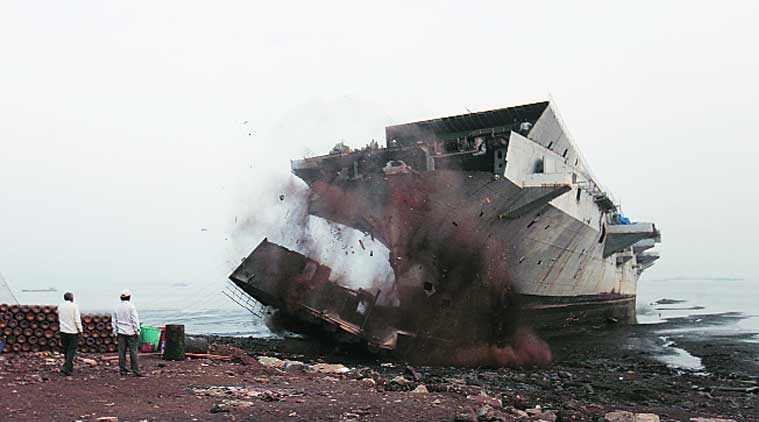TEL AVIV AND NEW DELHI — Israeli and Indian navies are poised to equip their warships with advanced Barak-8 anti-missile and air defense systems following last week’s long-awaited test, capping nearly eight years of cooperative development.
Led by state-owned Israel Aerospace Industries (IAI), the vertically launched intercepting system has a 70-kilometer range and provides persistent 360-degree coverage against saturation attacks by sea-skimming missiles and a spectrum of air-breathing threats.
IAI executives said sea-based versions are now ready for full-rate production for both navies, which are expected to declare initial operational capability in a number of months.
In parallel, an IAI-led team is readying a ground-based version for the Indian Air Force, with projected deployment to begin next year and extend through 2017.
Defense officials and Navy officers from both countries hailed the successful Nov. 10 intercept test as validation of all system elements and a testament to their strategic ties.
An Indian Navy official noted that the program had run nearly four years behind schedule, primarily due to problems with the DRDO-developed rocket motor, “which affected the range and operational capability to engage sonic targets.”
The Barak-8 system had been slated for delivery by 2011 under a 2006 government-to-government contract, Indian officials said.
Boaz Levy, executive vice president and general manager of IAI’s Systems, Missiles and Space Group, told Israel-based reporters that engine-related problems have been resolved and that all elements of sea- and ground-based variants are validated and ready for serial production.
“It was a perfect interception. Just beautiful,” Levy said of the Nov. 10 test against an air-breathing target simulating advanced maneuvering capabilities of fighter bombers.
Alluding to developmental challenges and schedule glitches, Rear Adm. Ophir Shoham, director of Israel’s Defense Research and Development Directorate (DR&DD), said the Barak-8 project showcased “constructive cooperation between the Indian DRDO [Defence Research and Development Organization] and the Israeli DR&DD and the armed forces of both nations.
“Together, they have pushed forward this important program, overcoming technological challenges and earning achievements along the way,” he said.
Similarly, Avinash Chander, DRDO chief and scientific adviser to India’s minister of defense, hailed the test as “an important milestone” in bilateral cooperation.
Chander led a delegation of Defence Ministry officials, scientists and Navy officers participating with Israeli counterparts in the milestone test. Last week’s success transitions the program into another series of operational tests as flagship partners equip and field sea-based defenses.
Sources in New Delhi said the Indian Navy plans to begin equipping the Barak-8 long-range surface-to-air missile defense system on its stealth warships, under construction at state-owned Mazagon Docks.
An Indian DRDO official said last week’s test validated the system’s ability to perform maneuvers. He said the intercepting system will be tested in India before the project is completed.
In Israel, the Navy plans to equip its three Sa’ar-5 corvettes with the system. One of the Sa’ar-5s has already been outfitted with the active electronically scanned array radar system developed by IAI’s Elta Systems subsidiary for the Barak-8 program. The radar consists of four large panels positioned at both ends of the ship for persistent, all-weather, 360-degree coverage.
Under Israel’s operational concept, individual ships are capable of operating independently or as a battle group, where smaller vessels are slaved to the Barak-8-equipped command ship.
“The C4I system is unprecedented in its sophistication,” Levy said. “All ships in the group see the entire picture.”
IAI data released shortly after last week’s test said the system uses an advanced broadband communication network to coordinate between the missile and batteries.
“The system deals with short-, medium- and long-range threats, where its interconnectivity among the various ships in the naval task force enables it to be a multilayer air and missile defense system of systems,” according to IAI.
An Indian DRDO official said dozens of DRDO scientists have been stationed in Israel for the duration of the project.
An IAI executive said IAI and its team of subcontractors are already supplying the system “to a number of customers” whom he declined to identify beyond flagship users in Tel Aviv and New Delhi. ■



